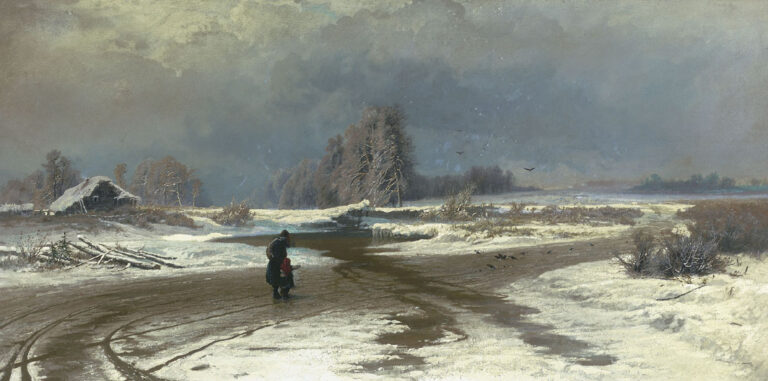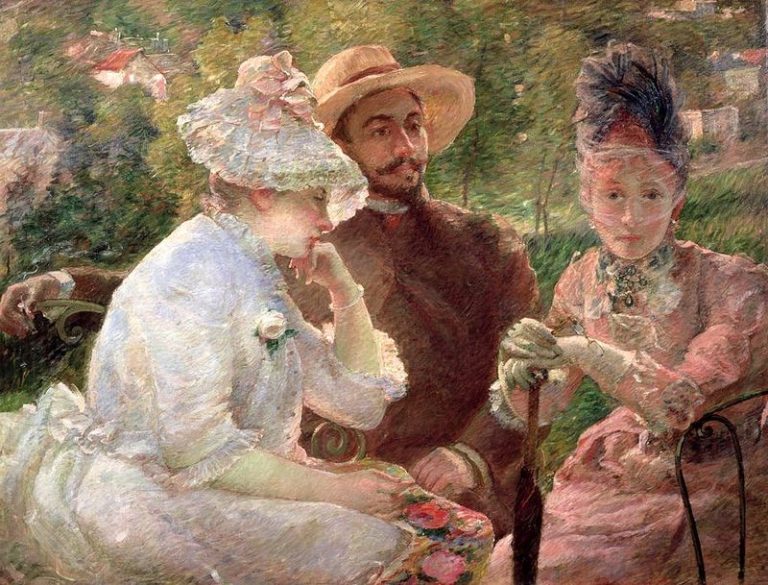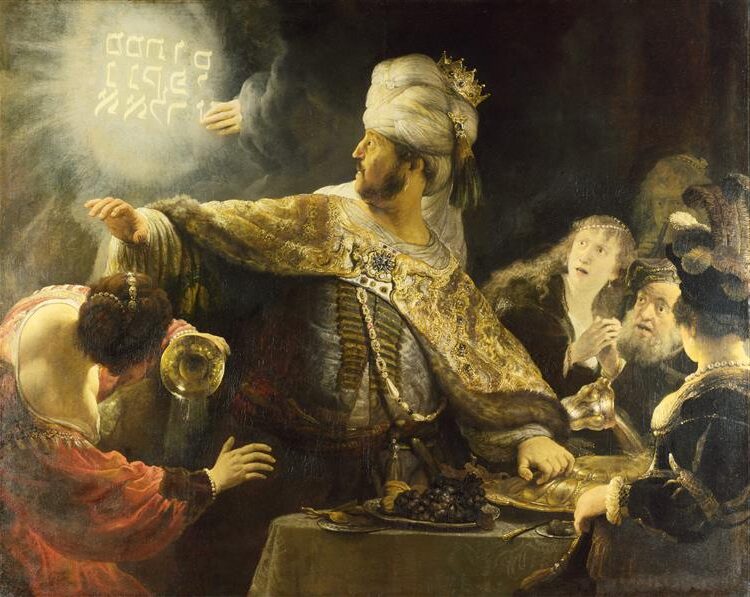Brice Marden Painter: A Visionary Master of Abstract Expressionism
Born: October 15, 1938, Bronxville, New York, U.S.
Death: August 9, 2023, Tivoli, New York, U.S.
Art Movement: Minimalism, Abstract Expressionism, Lyrical Abstraction
Nationalité : Américain
Teachers: Esteban Vicente, Alex Katz, Jon Schueler, Jack Tworkov, Reginald Pollack, Philip Pearlstein, and Gabor Peterdi
Institution: Boston University School of Fine and Applied Arts and Yale School of Art
Brice Marden Painter: A Visionary Master of Abstract Expressionism
Brice Marden’s Artistic Journey
Brice Marden’s evolution as a painter spans decades of exploration and innovation. His work moved from minimalist beginnings to complex linear compositions influenced by Eastern traditions.
The 1960s: Emergence of a Unique Style
In the mid-1960s, Marden established himself with monochromatic paintings that helped define minimalist aesthetics. Works like “Nebraska” (1966) featured subdued, single-color panels with muted tones of gray, green, and earth colors.
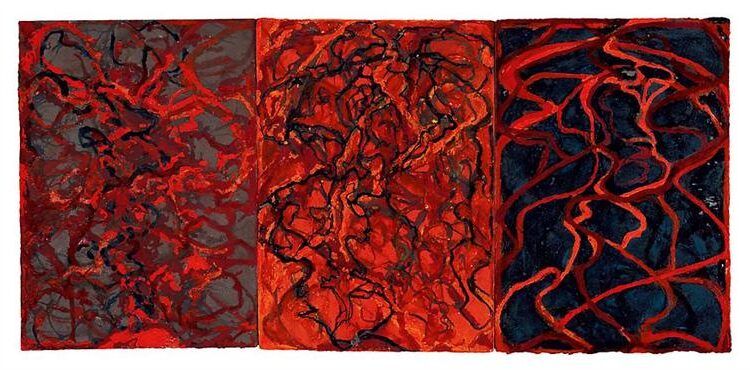
Nevisian Triptych, 2008, by Brice Marden
These early paintings were deceptively simple but contained subtle complexities. Marden applied layers of oil paint mixed with beeswax, creating surfaces with rich, tactile qualities. The slightly uneven edges revealed the human touch.
Unlike other minimalists, Marden’s work maintained connections to abstract expressionism through his attention to surface qualities and gestural elements. His studio practice was meticulous and deliberate, with each painting requiring intense focus and multiple layers.
The 1970s and Cold Mountain Series
By the 1970s, Marden began exploring multi-panel compositions. The “Grove Group” (1973) marked an important transition in his work, demonstrating his growing interest in relationships between color fields and geometric arrangements.
The late 1980s saw Marden embark on his landmark “Cold Mountain” series, named after the legendary Chinese poet Han Shan. These paintings represented a significant departure from his earlier work, introducing complex networks of curving, intertwined lines.
The series combined abstraction with elements suggesting landscape and natural forms. Marden’s lines became more fluid and expressive, creating dynamic pathways across monochromatic backgrounds that suggested both movement and meditation.
Influence of Asian Culture and Calligraphy
Asian artistic traditions profoundly shaped Marden’s later work. His travels to Japan, China, and other parts of Asia exposed him to calligraphy and ink painting traditions that transformed his approach to line and composition.
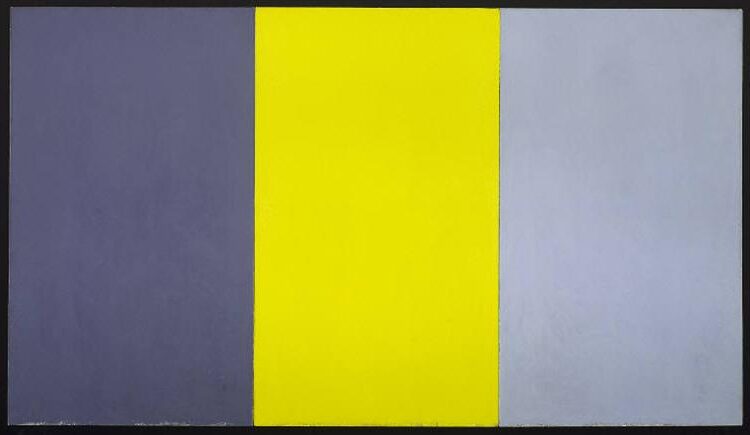
Summer Table, 1972, by Brice Marden
Japanese calligraphy particularly influenced his technique. Marden studied the fluid gestures and controlled spontaneity of master calligraphers, adapting these principles to his own abstract language of marks and lines.
Rather than mimicking Asian characters, Marden absorbed their underlying principles of balance, rhythm, and energy. His paintings began to embrace the spiritual aspects of mark-making, where each line carried both visual and metaphysical significance.
His studio became filled with Asian art objects, calligraphy scrolls, and scholarly works that informed his practice. This cultural exchange resulted in paintings that bridged Western abstraction and Eastern philosophical traditions.
The Philosophical Underpinnings of His Work
Brice Marden’s philosophie artistique centered on allowing paintings to emerge through a deeply intuitive process. His approach balanced rigid self-discipline with openness to creative discovery.
Exploring ‘Let the Painting Make You’
Marden firmly believed in surrendering to the painting process itself. “Let the painting make you” became a guiding principle throughout his career. This philosophy meant that while he established rules for each work, he remained receptive to what emerged on the canvas.
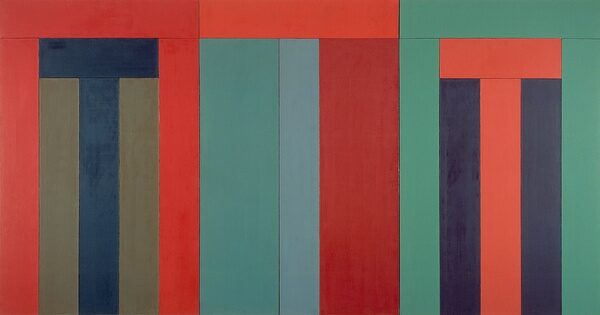
Thira, 1980, by Brice Marden
According to interviews, Marden described painting as speaking “through him from the inside out.” This approach required both discipline and surrender. He didn’t impose predetermined images but allowed forms and colors to develop organically.
His process involved intense observation and response. Marden would apply paint, step back, and let the work guide the next decision. This meditative approach created a dialogue between artist and artwork.
Rather than forcing outcomes, Marden trusted in the wisdom of the creative process itself. This stance reflected his belief that authentic expression emerges when the artist’s ego steps aside.
Abstraction as a Form of Transcendence
Marden viewed abstraction as a path to something beyond the material world. His minimalist compositions aimed to distill complex experiences into essential forms that could evoke deeper meaning.
His work often began with specific memories or experiences, which he then reduced to their core elements. Search results note that he would “distill his memories to a single key moment of inspiration.” This practice transformed personal experience into universal expression.
The meditative quality of his paintings invited viewers into contemplative states. By stripping away narrative elements, Marden created space for spiritual engagement with pure form and color.
His minimalist approach wasn’t about emptiness but about finding the essential. As noted in search results, one of his key contributions was “his ability to distill complex ideas into minimalistic compositions.”
Marden’s paintings also manipulated physical space, creating an embodied experience rather than just a visual one. This quality helped transcend the boundaries between artwork and viewer.
Technical Mastery and Innovations
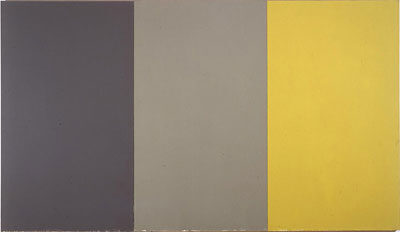
Range, 1970, by Brice Marden
Brice Marden’s approach to painting combined précision technique avec innovative methods that set his work apart in the art world. His distinctive techniques evolved throughout his career, establishing him as a master of surface and material.
Oil on Linen: A Signature Approach
Marden developed a unique process using oil paint mixed with beeswax and turpentine on linen canvas. This combination created his trademark matte surfaces with a distinctive luminous quality. The wax-oil mixture allowed him to build up thin, translucent layers that captured light in subtle ways.
His application method was methodical and precise. He would apply paint with a spatula or knife rather than brushes in his early works, creating smooth, uniform surfaces.
The linen canvas provided the perfect texture to receive his mixtures. It absorbed the medium differently than traditional canvas, enhancing the depth of his monochromatic works.
Monochromatic Paintings: A Study in Minimalism
Marden’s early monochromatic paintings from the 1960s and early 1970s demonstrated his mastery of color relationships and surface tension. These works featured single colors or closely related tones applied in layers.
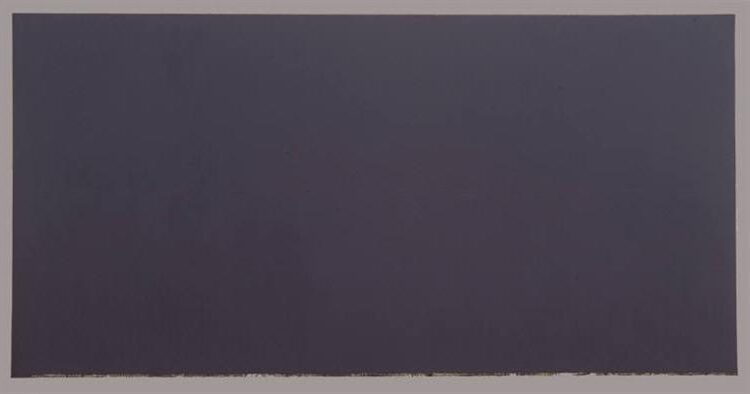
The Dylan Painting, 1966, by Brice Marden
In pieces like “Nebraska” (1966), he explored how small variations in a single color could create profound visual experiences. His monochromatic approach wasn’t about simplicity but rather about complexity within restraint.
The edges of his monochromatic works often revealed layers of previous colors, creating a subtle timeline of the painting’s creation. This technique gave viewers a glimpse into his process.
His minimalist approach influenced generations of painters interested in the expressive potential of restrained color palettes.
Technique et méthodologie
Marden’s working methods were disciplined and deliberate. He developed a systematic approach to painting that balanced control with chance elements.
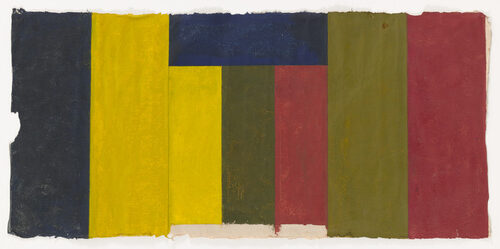
Study II, 1981, by Brice Marden
His surfaces appeared simple but were actually the result of numerous layers. He would often apply paint, scrape it off, and reapply it multiple times until achieving the desired effect.
In later works, Marden incorporated calligraphic elements inspired by Asian traditions. He used long sticks with rags attached to create flowing, lyrical lines that contrasted with his earlier geometric precision.
His technique evolved to include more gestural elements while maintaining his characteristic attention to surface quality. This combination of precision and spontaneity defined his unique contribution to abstract painting.
Questions fréquemment posées
Brice Marden established himself as an influential figure in abstract art through his distinctive approach to minimalism, color fields, and calligraphic expressions. His work spans important series, prestigious museum collections, and shows a clear evolution of style throughout his six-decade career.
What is the significance of Brice Marden’s ‘Cold Mountain’ series in contemporary art?
The ‘Cold Mountain’ series, created in the late 1980s and early 1990s, marked a pivotal moment in Marden’s career. These works introduced his calligraphic line technique inspired by Chinese poetry and East Asian calligraphy.
The series takes its name from the Tang Dynasty poet Han Shan (Cold Mountain) and reflects Marden’s deep engagement with Asian artistic traditions. These paintings feature interwoven, ribbon-like lines that create complex networks across monochromatic backgrounds.
Art critics consider this series significant for bridging Eastern and Western artistic traditions while expanding the vocabulary of abstract painting in contemporary art.
Which institutions have featured Brice Marden’s work in their collections?
The Museum of Modern Art (MoMA) in New York holds a significant collection of Marden’s work and featured him in multiple exhibitions throughout his career. His passing in 2023 was notably commemorated by the institution.
The Whitney Museum of American Art, the Tate Modern in London, and the Solomon R. Guggenheim Museum also maintain important Marden pieces in their permanent collections.
His works appear in the National Gallery of Art in Washington, D.C., the Art Institute of Chicago, and numerous international museums, confirming his global significance in contemporary art.
How has Brice Marden’s artistic style evolved over the years?
Marden’s early work in the 1960s featured minimalist monochromatic panels with rich, encaustic surfaces that emphasized the physical properties of paint. These pieces established his reputation within the minimalist movement.
In the 1970s, he began experimenting with multiple panel works and expanded his color palette while maintaining his characteristic restraint and sensitivity to surface.
The transformative moment came in the 1980s when Marden incorporated calligraphic elements inspired by Asian art traditions. This shift introduced fluid, winding lines that created more complex compositions while preserving his distinctive approach to color relationships.
Can you describe the influence of calligraphy on Brice Marden’s paintings?
Marden’s encounter with Asian calligraphy in the 1980s profoundly transformed his artistic practice. His study of Chinese and Japanese calligraphic traditions introduced a new gestural quality to his previously restrained work.
He adapted calligraphic techniques to create flowing, ribbon-like lines that dance across his canvases. Unlike traditional calligraphy, Marden’s lines did not form letters or characters but instead created abstract networks of movement and energy.
This calligraphic influence allowed Marden to combine the physical immediacy of Abstract Expressionism with the contemplative qualities of Eastern art traditions.
What are the distinct characteristics of Brice Marden’s ‘brown paintings’?
Marden’s “brown paintings” from the mid-1960s to early 1970s feature muted, earth-toned monochromatic surfaces created with a mixture of beeswax and oil paint. These works appear simple but contain subtle variations in texture and tone.
The paintings typically have a horizontal band at the bottom edge where drips of paint accumulated during the working process. Marden deliberately left this feature visible, highlighting the physical process of painting.
These works embodied Marden’s early minimalist approach while suggesting natural references through their organic coloration and tactile surfaces.
In what ways has Brice Marden contributed to the minimalism movement in art?
Marden helped expand minimalism beyond its strict geometric tendencies. He did this through his sensuous approach to color and materiality.
His early monochromatic works brought emotional depth to minimalist practices. They did this through their subtle variations and rich surfaces.
He demonstrated how restraint and reduction could reveal rather than eliminate expressive possibilities. His work showed that minimalism could incorporate references to nature, light, and atmosphere while maintaining formal simplicity.
Marden’s long career illustrated how minimalist principles could evolve and absorb new influences. He showed this without abandoning their essential focus on direct experience of materials, color, and form.





